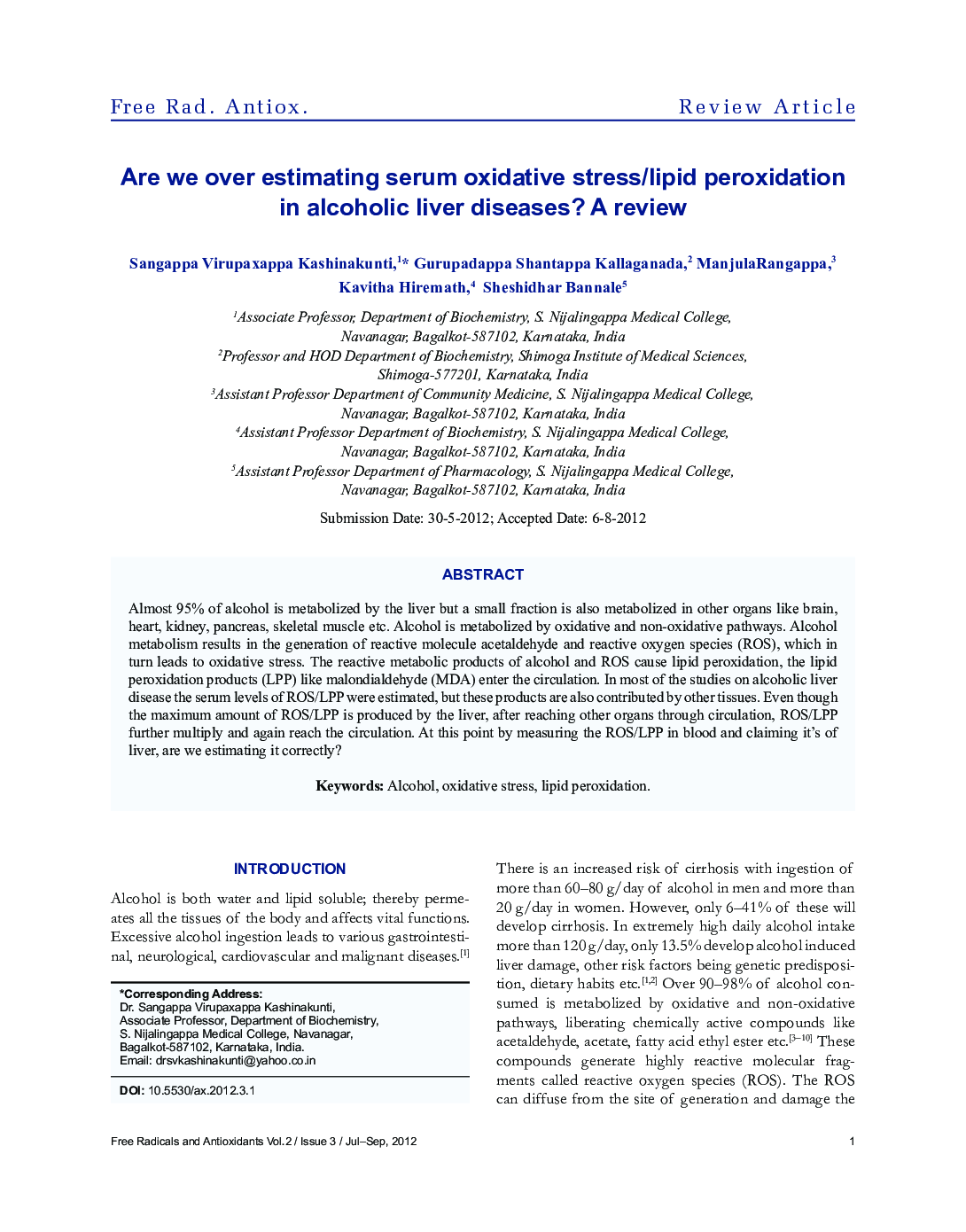| Article ID | Journal | Published Year | Pages | File Type |
|---|---|---|---|---|
| 2482895 | Free Radicals and Antioxidants | 2012 | 9 Pages |
Abstract
Almost 95% of alcohol is metabolized by the liver but a small fraction is also metabolized in other organs like brain, heart, kidney, pancreas, skeletal muscle etc. Alcohol is metabolized by oxidative and non-oxidative pathways. Alcohol metabolism results in the generation of reactive molecule acetaldehyde and reactive oxygen species (ROS), which in turn leads to oxidative stress. The reactive metabolic products of alcohol and ROS cause lipid peroxidation, the lipid peroxidation products (LPP) like malondialdehyde (MDA) enter the circulation. In most of the studies on alcoholic liver disease the serum levels of ROS/LPP were estimated, but these products are also contributed by other tissues. Even though the maximum amount of ROS/LPP is produced by the liver, after reaching other organs through circulation, ROS/LPP further multiply and again reach the circulation. At this point by measuring the ROS/LPP in blood and claiming it's of liver, are we estimating it correctly?
Keywords
Related Topics
Life Sciences
Biochemistry, Genetics and Molecular Biology
Molecular Medicine
Authors
Sangappa Virupaxappa Kashinakunti, Gurupadappa Shantappa Kallaganada, ManjulaRangappa ManjulaRangappa, Kavitha Hiremath, Sheshidhar Bannale,
